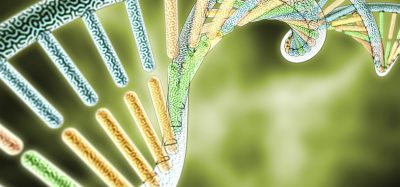Expert view: Targeting the cGAS-STING pathway with a new Transcreener HTS assay
Posted: 24 March 2020 | BellBrook Labs | No comments yet
DNA in the cytoplasm is an indicator of microbial infection, serving as a danger signal and resulting in induction of an innate immune response via the cyclic GAMP synthase (cGAS)/STING (Stimulator of INterferon-sensitive Genes) pathway.
However, aberrant activation of cGAS by self-DNA triggers a type I interferon (IFN) response that contributes to a growing list of autoimmune and inflammatory conditions, including lupus, age-related macular degeneration, inflammatory bowel disease and nonalcoholic steatohepatitis. Knockout studies in animal models have clearly indicated that inhibiting cGAS is a promising approach for therapeutic intervention.
Regardless of whether the initial approach is virtual or high-throughput screening (HTS), discovery and optimisation of lead molecules requires a robust biochemical assay. To enable discovery of small molecule drugs targeting cGAS, we developed Transcreener-based assays for cGAMP detection; ie, homogenous (mix-andread), competitive immunoassays with fluorescence polarisation (FP) and time-resolved Förster resonance energy transfer (TR-FRET) signals. The key assay reagents are antibodies that selectively bind cGAMP in the presence of excess ATP and GTP and tracers that are displaced by cGAMP. The assays allow direct, quantitative measurement of the cGAS product formation in endpoint or continuous mode without the use of coupling enzymes or secondary detection reagents.
Similar to other Transcreener assays, the cGAMP assays have the performance characteristics required for small molecule screening, including sensitivity, robustness (good dynamic range, minimal signal variation) and low levels of compound interference. In addition, they are invaluable tools for identifying and triaging non-stoichiometric inhibitors, ranking compound potency and defining the mechanism of action. Moreover, the assay can be used in continuous mode to estimate inhibitor residence times with the ‘jump-dilution’ method, allowing incorporation of binding kinetics early in lead development. The Transcreener cGAS assay should prove to be a valuable tool for the discovery of novel cGAS antagonists.
Related topics
Assays, DNA, Immunoassays, Targets
Related organisations
BellBrook Labs







